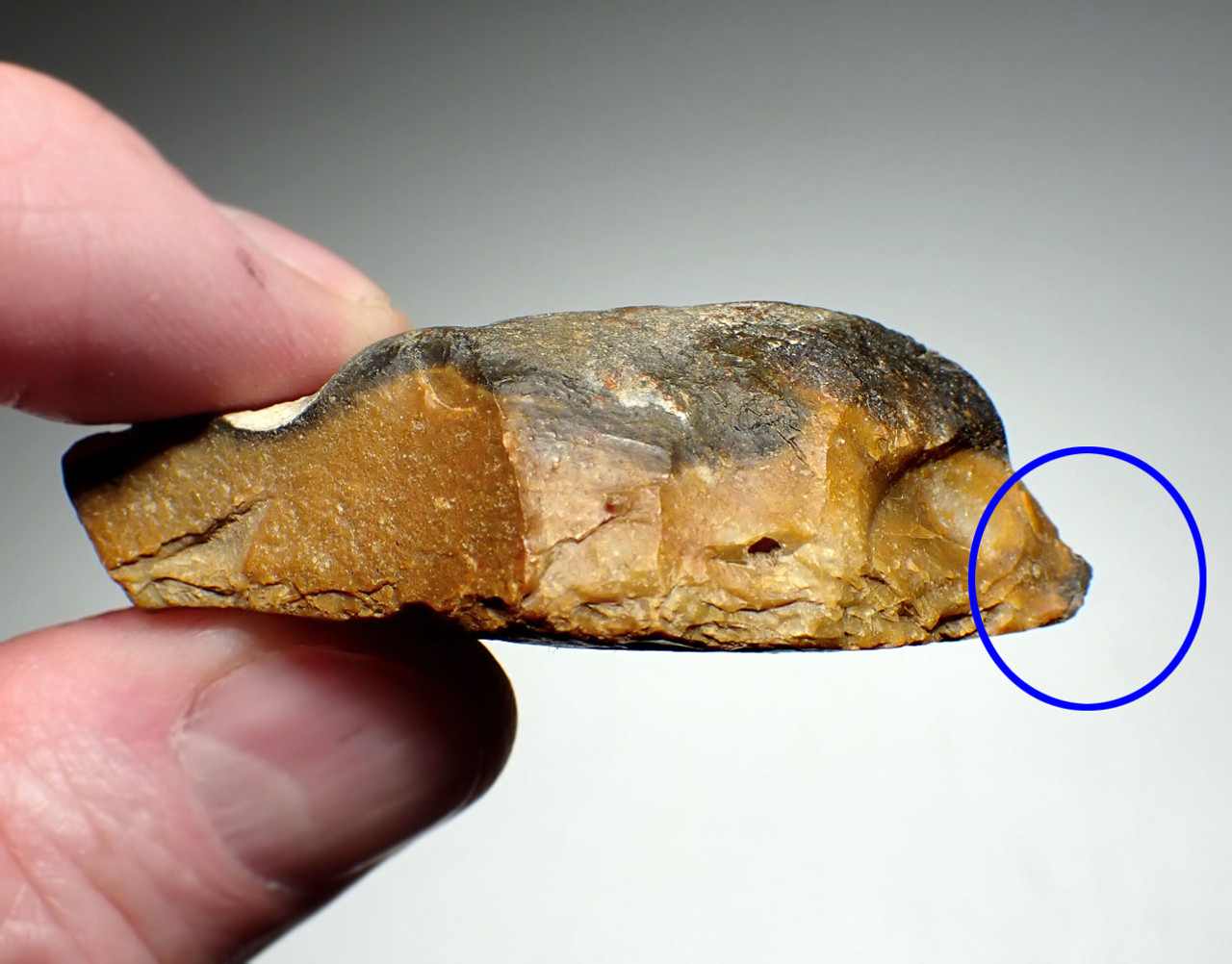Product Description
SEE MORE MOUSTERIAN NEANDERTHAL TOOLS
This authentic Mousterian stone tool dates back to the Middle Paleolithic Period. It was fashioned by Neanderthals over 40,000 years ago out of flint, and collected from a former Neanderthal occupation rock shelter site in the Dordogne region of France, considered to be the "Capitol of Prehistory". The site this specimen was found is now closed and protected by the government. The fact that this archeological site is off-limits to any collecting, makes this wonderful stone tool artifact exceedingly rare and desirable! Because collecting these artifacts has been off-limits for decades, genuine fine grade Mousterian Neanderthal tools such as this specimen are most certain to continue to appreciate in value as time goes on.
This Neanderthal flint flake tool type is called a BORER or AWL. In the past, it was also called a BEC, a dated French term meaning 'beak" in English, for the protruding flaked feature of the tool's resemblance to a bird beak. The robust flaked point on the end, would be perfect to drill or bore into softer materials such as wood, bone or ivory to make a hole or even engrave the materials for art objects. The flake tool is complete with no modern damage and all its original flaking. Evidence of use wear can be seen on the cutting edges. Intact mineral deposits and deep patina on the flint surfaces and hinge fractures to testify to its authenticity and lack of any modern alterations. A superb example from this famous Neanderthal region!
This is an actual complete Mousterian Neanderthal flake tool with all the features that define it to the specific typology listed above. Any expert can readily separate it from worthless and highly common Paleolithic debris flakes (discarded flakes caused by flint-knapping real tools), or flakes made by natural forces such as frost or glacial action, often sold by ignorant or unscrupulous sellers, as genuine Paleolithic flake tools. Intact mineral deposits and deep patina on the flint surfaces and hinge fractures testify to its age, authenticity and lack of any modern alterations.
 US DOLLAR
US DOLLAR
 EURO
EURO
 AUSTRALIAN DOLLAR
AUSTRALIAN DOLLAR
 CANADIAN DOLLAR
CANADIAN DOLLAR
 POUND STERLING
POUND STERLING


















